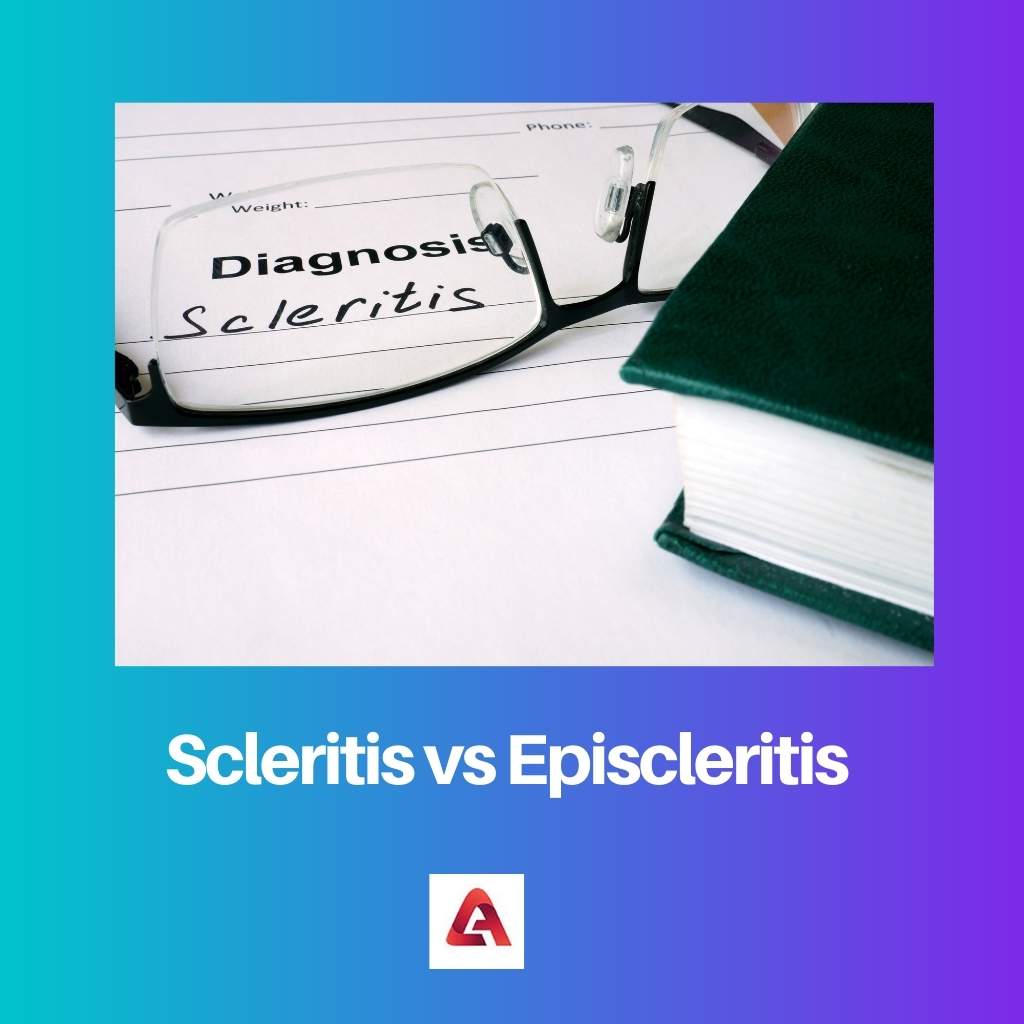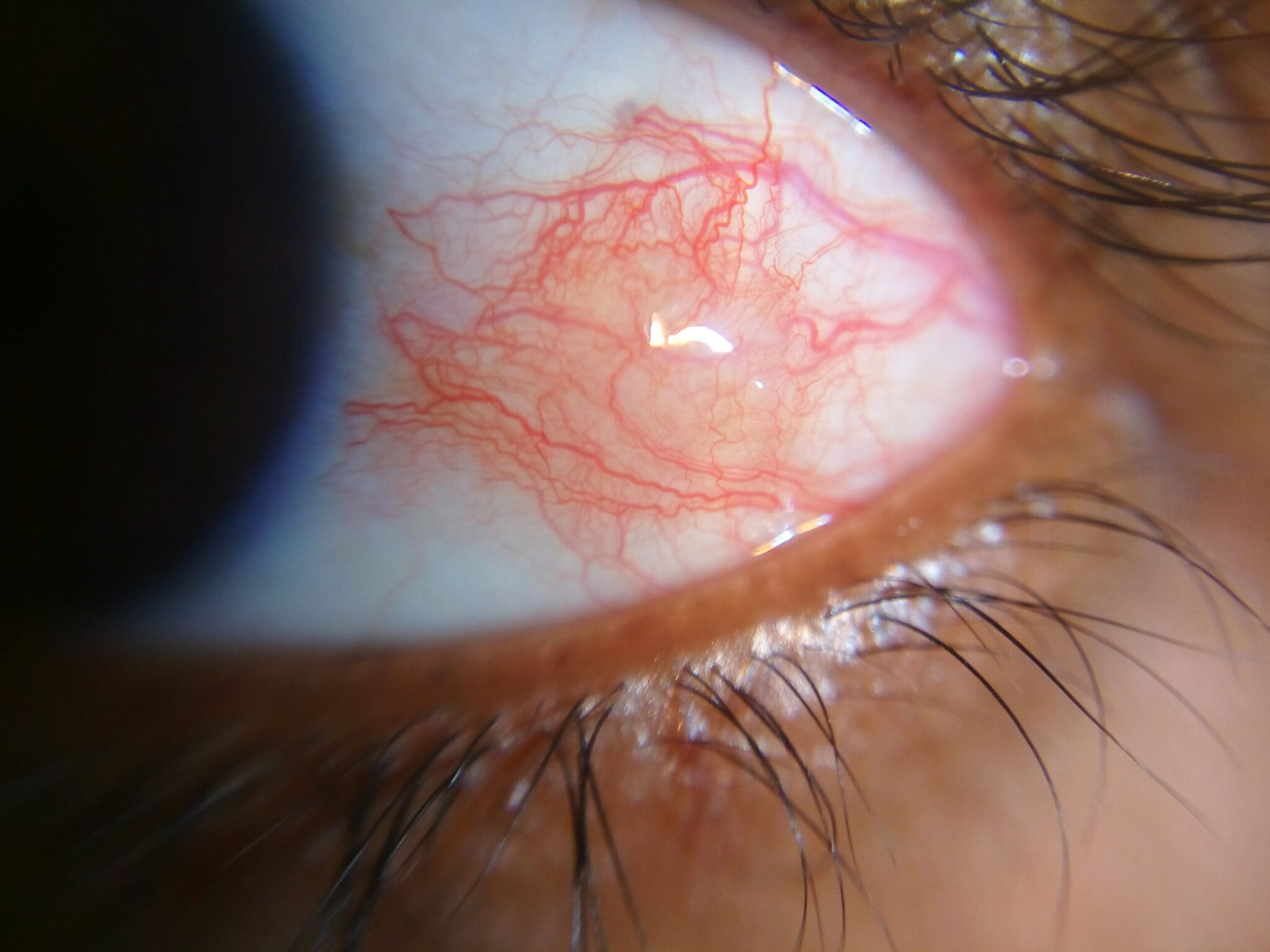Without an eye, this world is completely black, and we are not able to see this colorful world. An eye is such a delicate part, a little particle of dust can even irritate.
Physicians in their whole life go through many patients with red eyes. The redness of an eye is directly related to two causes such as episcleritis and scleritis. They both are quite similar in presentation but can be differentiated in terms of the astute clinician.
Key Takeaways
- Scleritis is a serious eye condition that can cause severe eye pain and vision loss. At the same time, episcleritis is a milder condition that does not cause any pain or vision problems.
- Scleritis affects the white part of the eye (the sclera), while episcleritis affects the layer of tissue between the sclera and the conjunctiva.
- Scleritis is treated with corticosteroids or other immunosuppressive drugs, while episcleritis goes away on its own and may only require topical anti-inflammatory medication.
Scleritis vs Episcleritis
The difference between scleritis and episcleritis is based on where they take place. Scleritis arise on the white part of the eye or known as the sclera. In contrast, episcleritis occurs on the episcleral, which lies between the conjunctiva and connective tissue layer. Pain is moderate to severe in scleritis, whereas in episcleritis, pain is none or mild.

Scleritis can be considered as the inflammation which occurs in the scleral and episcleral tissues in both deep and superficial episcleral vessels. It can be seen as a painful red eye that is with or without vision loss.
The scleral disease is associated with several connective tissue disorders. Rheumatoid arthritis, which is infectious or surgically induced, is the most common among scleritis.
Episcleritis is an inflammatory disorder that occurs on the episcleral. Episcleral is the area where blood vessels are present, and it is located between the conjunctiva and sclera.
It is an acute disorder that occurs for less than three weeks and goes away on its own. It causes redness, photophobia, discomfort, and pain in the eyes.
Comparison Table
| Parameters of comparison | Scleritis | Episcleritis |
|---|---|---|
| Visual activity | Normal/decreased | Normal |
| Risk factors | Post-surgical | Systemic autoimmune conditions |
| Pain | Moderate to severe | None or mild |
| Pathophysiology | Autoimmune dysregulation | Idiopathic inflammation |
| Treatment | Opthalmology consult | Self-limited |
What is Scleritis?
The white part of an eye is the outer protective layer, or is known as the sclera. Overall 83 percent surface of the eye is covered by the sclera. When T cells of the immune system react with the sclera, it can lead to scleritis.
As a result, the sclera becomes red and severely inflamed, which is quite painful. Serious scleritis can even lead to partial or complete vision loss. That’s why medication is important to resist it from proceeding.
Scleritis can be classified into two types- anterior scleritis and posterior scleritis. They both are divided based on where they occur, whether at the front or at the back. The most common scleritis is Anterior scleritis. In contrast, posterior scleritis is difficult to detect and diagnose due to its variable symptoms.
Tenderness of the eye, blurred vision, extreme sensitivity to light, pain, redness, swelling of the sclera, and tearing are Symptoms of scleritis. Scleritis has a high chance of developing if the person is suffering from rheumatoid arthritis, lupus, Sjogren’s syndrome, Wegener’s disease, and inflammatory bowel disease.
To diagnose scleritis, an eye doctor goes through the history of systemic conditions (rheumatoid arthritis, lupus), blepharitis, bacterial conjunctivitis, episcleritis, etc.
To treat scleritis, medications include corticosteroid pills, immunosuppressive drugs, nonsteroidal anti-inflammatory drugs, oral glucocorticoids, antifungal medications, and antibiotics.

What is Episcleritis?
Episcleral is the thin layer of tissue and forms the sclera (white part of the eye) as it lies between the conjunctiva and connective tissue layer. Episcleritis is caused when there is a benign and self-limiting inflammatory disease that majorly affects the episcleral.
Episcleritis is a common condition, and as a result, it can be observed through the red and irritated eye. Episcleritis can be divided into two types- simple episcleritis and nodular episcleritis. In simple episcleritis, there is redness on a specific section or throughout the eye.
While in nodular episcleritis, dilated blood vessels are surrounded by raised bumps in a specific area of the eye. Simple episcleritis is more than nodular episcleritis. Symptoms of episcleritis include redness in a section of the eye, pain, sensitivity to light (photophobia), watery discharge, and discomfort.
It is difficult to find out the cause of episcleritis, in severe forms, the culprits are underlying conditions (Crohn’s, inflammatory bowel disease). Rheumatoid arthritis and ankylosing spondylitis can also manifest.
Clinical diagnosis fits for episcleritis, based on history, slit lamp examination, and eye exam. If episcleritis is left untreated, it may go away within three weeks. It can be treated by artificial tear eye drops, corticosteroid eye drops, and nonsteroidal anti-inflammatory drugs but prescribe your doctor first.

Main Differences Between Scleritis and Episcleritis
- Scleritis patients are most of the greater age, or they are older than those patients who are suffering from episcleritis. It is mainly found in women rather than men. In contrast, Episcleritis occurs in most of the younger patients, such as young adults to the fifth decade.
- Symptoms of scleritis include decreased visual acuity, photophobia, redness of the sclera, lacrimation (excessive tearing), etc. In contrast, symptoms of episcleritis are irritation, tearing and sensitivity to light, etc.
- Scleritis is caused due to T cells of the immune system. On the flip side, episcleritis is caused to patients suffering from inflammatory diseases (Crohn’s, rheumatoid arthritis, and lupus).
- The doctor examines scleritis by studying adherent vessels, systematic inflammation and slit lamp (reveal changes), etc. In contrast, episcleritis is revealed by examining mobile vessels, reddish hue, and blanch with phenylephrine drops.
- The first symptom of scleritis occurs on the onset disease of connective tissue. On the other hand, episcleritis is a condition that occurs every few months.



